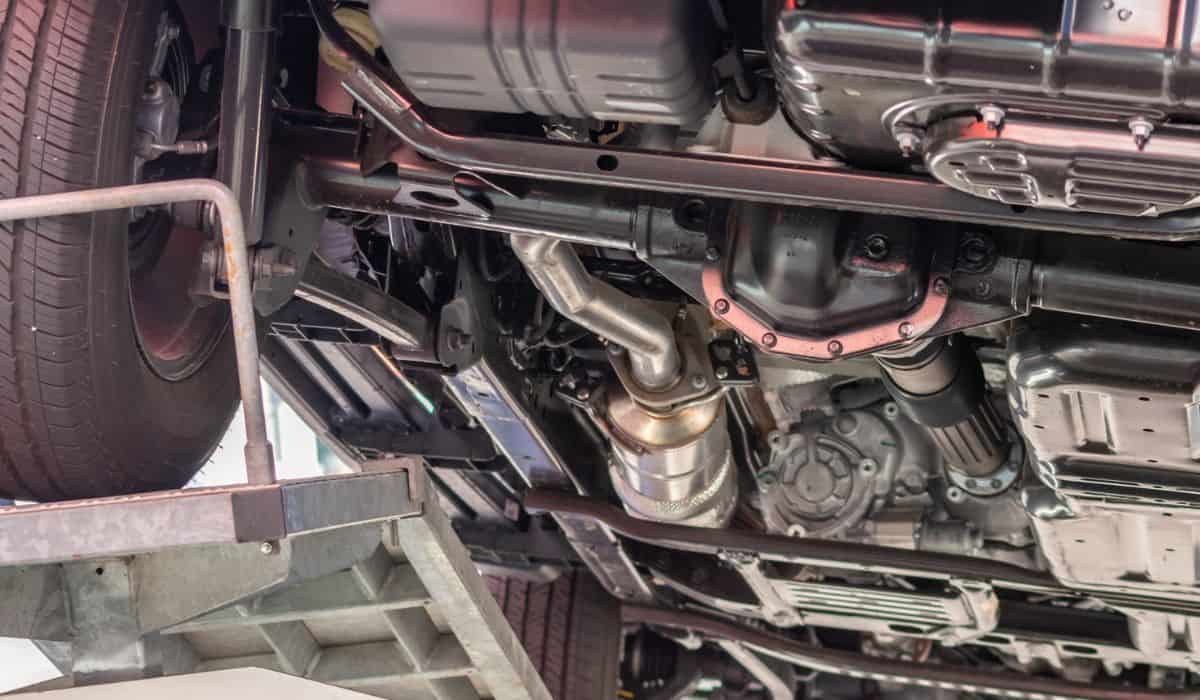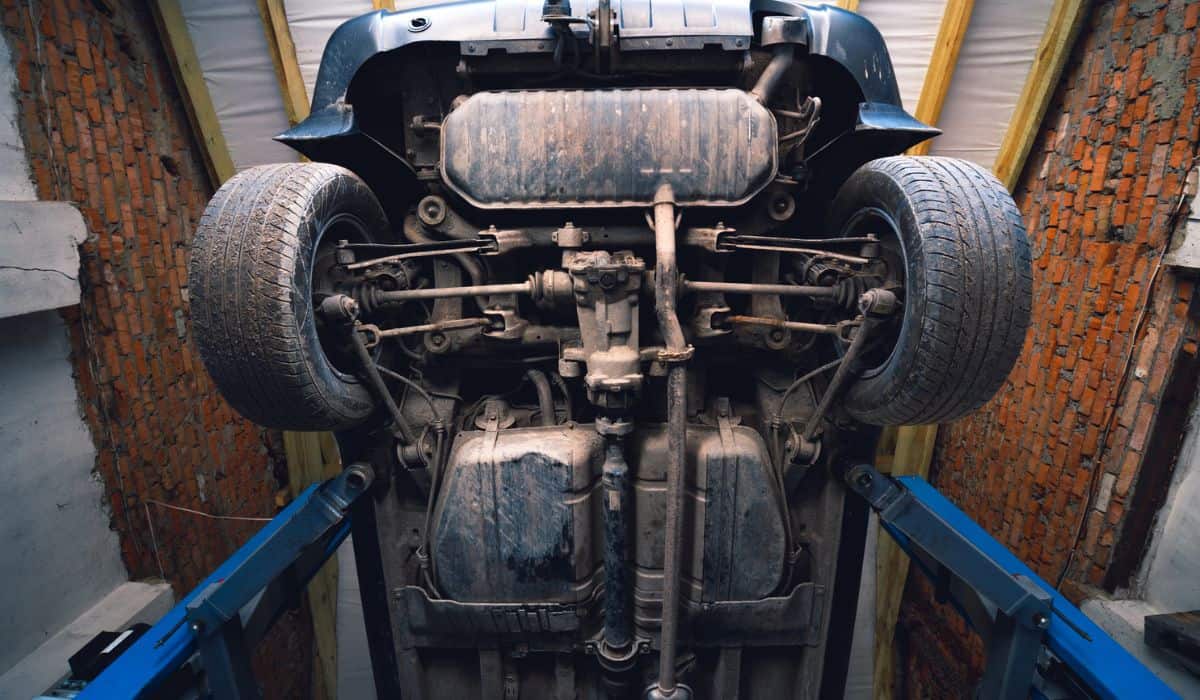Rough Idle: Could A Clogged Catalytic Converter Be The Culprit?
Rough idling — which is the shaking you might feel when your engine is running but the car’s not moving — has many potential causes. It could be a vacuum leak, dirty or clogged fuel injectors, faulty spark plugs, or low compression. It could also be due to a clogged catalytic converter — but how can you tell if that’s the issue at hand?

A rough idle can be due to a clogged catalytic converter. Look for other symptoms of a clog, such as reduced engine performance, the check engine light coming on, difficulty starting the car, and a sulfur smell. You can clean and fix the catalytic converter, or you can hire a mechanic to do the job.
Let’s take a closer look at the primary causes of a rough idle, including how to tell if it’s the catalytic converter and what you can do about it if it is.
What Are the Primary Causes of a Rough Idle?
There are a few things that can cause a rough idle, including the following:
Dirty or Clogged Fuel Injectors
If the fuel injectors are dirty or clogged, they may not be able to deliver the correct amount of fuel to the engine. This can result in a rough idle, as well as some other symptoms like the engine not performing as well as it should.
A Vacuum Leak
A vacuum leak can cause the engine to run lean (having too much air in comparison to fuel), resulting in a rough idle. This means there’s an excessive amount of air in the engine.
Faulty Spark Plugs
Worn or faulty spark plugs or ignition coils can cause misfires. These misfires can eventually result in a rough idle. If you think your spark plugs may just be dirty, you can click here for our cleaning guide.
Low Compression
Low compression in one or more cylinders can also cause rough idling.
Dirty Mass Air Flow Sensor
A dirty or faulty MAF sensor can cause the engine to run lean, resulting in a rough idle.
Clogged Catalytic Converter
If the catalytic converter becomes clogged, it can restrict exhaust flow and cause the engine to run poorly. This can manifest as a rough idle.
Symptoms of a Clogged Catalytic Converter
So, how can you tell if your rough idle is being caused by a clogged catalytic converter rather than one of the other issues we described above? You can tell by assessing if your car has other symptoms of a clogged converter, such as the following:
- Reduced engine performance or power
- Poor fuel economy
- Check engine light on
- Backfiring of the engine
- Rotten egg smell (due to the buildup of sulfur compounds in the exhaust)
- Difficulty starting the engine
If you do experience one or more of these symptoms, then it’s important to get the catalytic converter checked and repaired as soon as possible. If you have the know-how, it’s also possible to do this yourself.
Suggested Article: Can I replace my catalytic converter with a straight pipe?
What Tools Do You Need to Unclog a Catalytic Converter?
To unclog a catalytic converter, you will need:
- A set of wrenches or sockets to remove the catalytic converter from the exhaust pipe
- Gloves and eye protection
- A wire brush or a specialized catalytic converter cleaning solution (which you can buy on Amazon) to clean the inside of the converter
- A vacuum cleaner or compressed air (also on Amazon) to remove debris from the inside of the converter
- A replacement catalytic converter if the current one is beyond repair
Products Mentioned Above On Amazon
Last update on 2025-12-13 / If you click this affiliate link and make a purchase, we earn a commission at no additional cost to you.
How to Unclog a Catalytic Converter
If your catalytic converter is blocked and you’ve decided to fix it yourself, you can follow these steps to unclog it:
- Locate the Catalytic Converter: The first thing you’ll have to do is to locate the catalytic converter on your vehicle. It’s usually located in the exhaust system, between the engine and the muffler. If you aren’t sure where to find it, you can look at your car’s manual or consult a professional.
- Check for Signs of a Blockage: Check for visible signs of blockage, such as soot or debris buildup on the exterior of the converter. Sometimes, this can tell you right away what the problem is — since it’s easy to inspect it and see a problem.
- Clean the Catalytic Converter: Use a specialized catalytic converter cleaning solution and a brush to clean the exterior of the converter. Be sure to wear your safety gear when doing this.
- Remove Debris: Use a vacuum cleaner or compressed air to remove any debris that may have fallen inside the converter during the cleaning process. This is important, as if you put the catalytic converter back as it is, you may run into further issues.
- Start the Engine and Drive the Vehicle: Start the engine and let it run for a few minutes to allow the cleaning solution to work its way through the converter. Once the catalytic converter is clean and the exhaust pipe is clear, drive the vehicle for a few miles to ensure that the converter is functioning properly.
If the vehicle continues to have issues with the catalytic converter, it may be necessary to have the converter replaced by a professional mechanic. Although this DIY fix may work, it isn’t guaranteed to, especially if there are a more serious problems.
Suggested Read: Will catalytic converter reduce exhaust smell?
How Much Is a Professional Repair?

If you still have issues with the catalytic converter or aren’t confident enough to fix it yourself, you may find that you need to get it professionally repaired. The cost of this job depends on the extent of the damage and whether the catalytic converter needs to be replaced. You’ll also have to pay the labor cost.
The total cost may be anywhere from $800 up to around $4,000. If you do go the route of having a mechanic do the job for you, it’s therefore essential to get a quote and make sure you pick a professional with good reviews and a history of honesty and transparency.
Suggested Articles:
- New catalytic converter break-in period
- Can An Oil Change Affect Your Car’s Catalytic Converter?
- Can Seafoam Clean A Catalytic Converter?
- New catalytic converter smell
- Does catalytic converter affect fuel consumption
- What is the purpose of a catalytic converter?
- Rough Idle: Could A Clogged Catalytic Converter Be The Culprit?
The Final Word
At the end of the day, a catalytic converter could very well be the cause of your rough idle, but it’s important to keep an eye out for the other symptoms too. If you’re unsure of the cause or aren’t confident enough to fix it yourself, it’s a good idea to contact a mechanic who can do the job for you.


